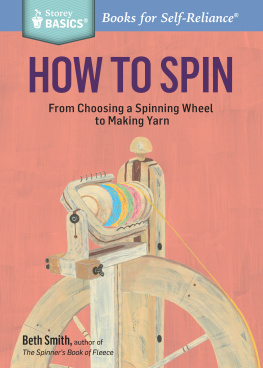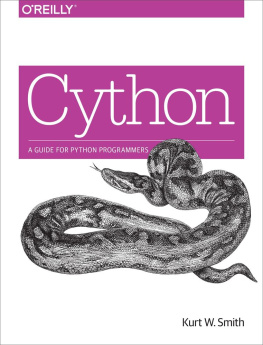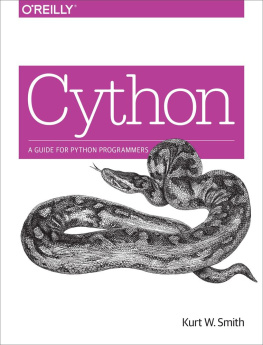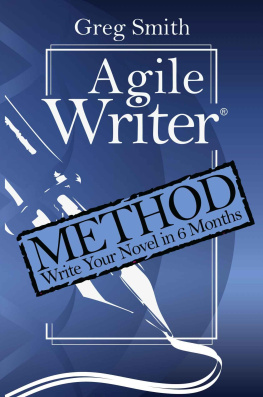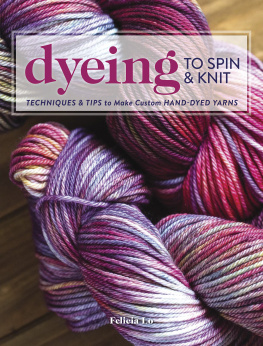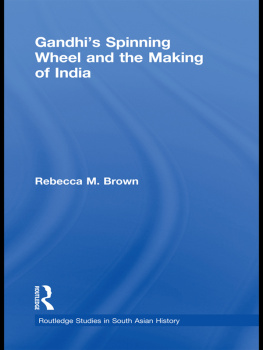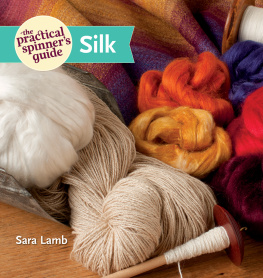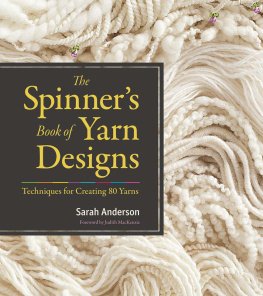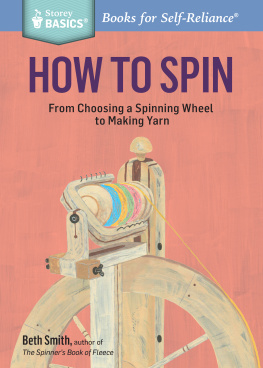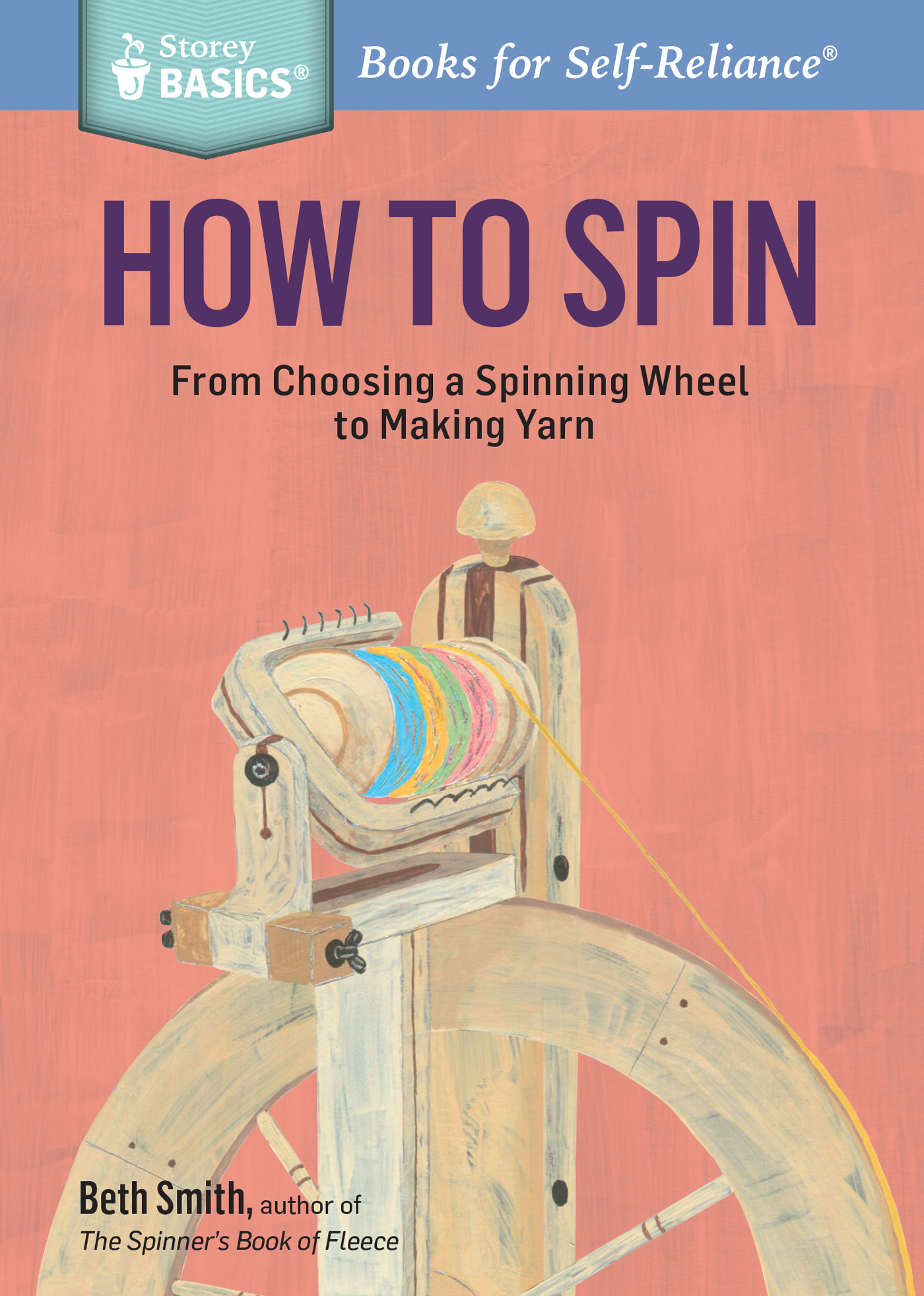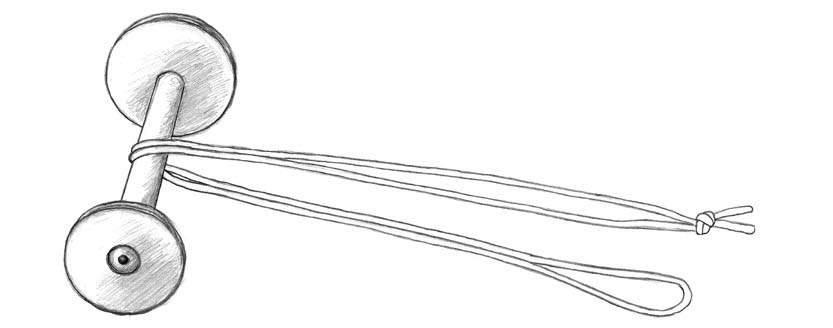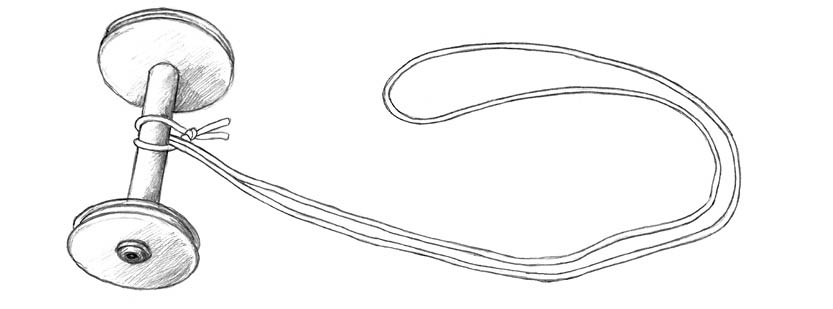To my kids, who are all working on getting beyond the beginner stage.
Contents
Acknowledgments
I just want to say thank you to all of the people who have helped me with this book. All of my spinning teachers over the years gave me all of the information that I needed. My darling husband, Lou, who is patient and kind when there is no dinner and the house is a disaster area. The kids who live with me and on their own, who love me even when I am short with them due to deadlines. And finally my editors, Gwen Steege and Ann Budd, who clarified and questioned and fixed the words so this book can help so many more people learn to spin their own yarn which is sheer joy once you get past those first two weeks of hardship.
Introduction
Take the Spinning Plunge
Spinning can be relaxing and satisfying, once you learn, of course. Its a simple process, really. Take a bit of fiber, add twist to it, and voil yarn! But that simple thing can be quite difficult as you learn to get your mind and body to work in harmony.
I learned to spin out of curiosity I simply wanted to know where yarn comes from. Ive been interested in textile work all my life, but never really thought about how the yarn or threads I used came to be. The day I finally I asked myself where yarn came from, I started doing some research. That research led me to learn to spin.
Like many new spinners, I began with a spindle, and it wasnt long before I was able to make an irregular yarn that could be wound onto the spindle shaft. Because my yarn didnt improve with practice, I assumed that my equipment must be bad. I decided that a spinning wheel must be necessary to spin smooth, even yarn, which, of course, isnt true. Not knowing any better, the first wheel I chose wasnt in working condition and needed a few parts.
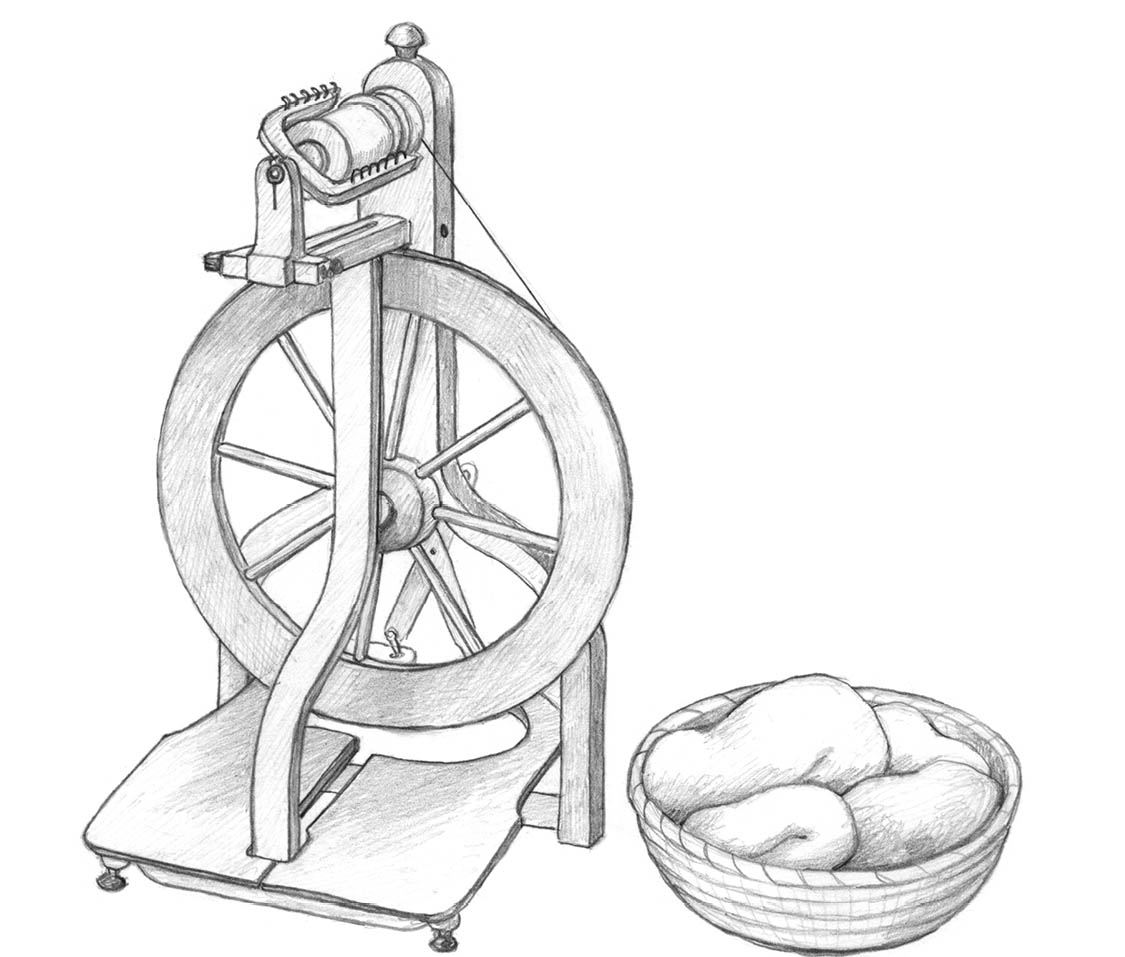
At this point, I got smart and looked for some local help. I got my wheel fixed, bought an entire raw Shetland fleece, and got to work ruining all of the fiber. Im not saying this wasnt a learning experience that produced plenty of skeins of yarn, but the methods I used to wash and prepare it for spinning were not the best choices for the fleece. That said, I would never discourage anyone from just going for it like I did. No money or time was wasted Im better for the experience, and that sheep grew a new fleece for the next shearing! I learned a lot, and through my story I can help others make faster progress.
Throughout the book, I talk a lot about sampling and trying things out its the best way I know to improve skill and confidence. Dont be afraid to experiment. Make adjustments to your wheel by increasing and decreasing tension, changing whorls, and tightening and loosening drive bands. Try different brake-band and drive-band materials to see how they affect the yarn you spin. Also, as you improve as a spinner, keep records and samples of your progress. They will serve as recipes for yarns that you may want to re-create later.
Above all, be patient. Spinning takes time to learn and a lot more time to master. In my experience as a teacher, new spinners need to practice at least 15 minutes every day for two weeks to feel comfortable. But dont force it. Stop when you begin to feel frustrated. If you start each practice session fresh, youll progress more rapidly.
Once you feel comfortable spinning and can sit at your wheel with confidence, I encourage you to make as many different kinds of yarn as you can thick yarns, thin yarns, textured yarns, and smooth yarns. Practice them all regularly so you dont get caught in the rut of only being able to spin one type of yarn. Dont be afraid to play at your wheel. Playing is not a waste of fiber. On the contrary, its an extension of your education and well worth the investment. And, please, knit, weave, or crochet sample swatches out of your yarn! Its the only way youll learn how different yarns behave in different fabrics.
Many feel isolated in the craft. If you feel this way, take heart with just a little research, youll find online communities and you may well find other spinners in your area. Facebook and Ravelry.com are great places to meet online friends. If youre looking for a more up-close and personal experience, join a spinning group or start one of your own. Online searches are a great way to find spinners in your area. Look for spinning or knitting or weaving guilds by searching for them along with surrounding city names. If you want to start your own group, include spinners of all levels. Youll hone your skills by helping the less experienced, and youll advance your skills by observing and learning from the more experienced.
Chapter one
Spinning in a Nutshell
Spinning is a simple matter of twisting loose fiber into a long, strong strand that we typically call yarn. Thread is simply very, very fine yarn. The concept is easy to grasp, but because you have to coordinate your hands, feet, and brain, the process can feel awkward and frustrating at first. New spinners generally produce yarn thats thick in some spots, thin in others, and, at times, becomes a gnarled mess or completely drifts apart. But with practice, youll settle into a comfortable rhythm and produce a uniform strand that will make you proud.
To begin, lets look at the general process to familiarize you with the steps. Once youre comfortable making yarn, you can move on to the next chapters to learn more about the various types of spinning wheels, fiber preparation, drafting methods, plying, and finishing the yarn.
For this abbreviated lesson, youll need cotton yarn for a leader (a strand of yarn fastened onto the bobbin that you can attach your unspun fiber to) and wool fiber for spinning. I recommend starting with undyed wool because dyes can affect the surface of the fiber and may make drafting (see ) more difficult. Its often best to begin with a type of wool thats not too soft or slippery, such as Corriedale or Romney, but beginning with a fiber that makes you happy can help with the experience.
Tying on a Leader
To use a spinning wheel, youll need to tie a leader onto the bobbin so you can attach the first bits of newly spun yarn to something. I prefer cotton leaders because they wear well and can be used over and over. To make a secure leader that doesnt slip and slide around the bobbin shaft, cut a piece of cotton string about 6 feet (2 m) long and attach it to the bobbin with a larks head knot (see below). This type of knot will remain in a tight, fixed position for multiple spinning sessions.
Tying a Larks Head Knot
- Tie the cut ends of the cotton yarn into an overhand knot to form a large circle, fold the circle in half, then wrap it around the bobbin shaft.
- Insert the looped end through the knotted end so the knot lies on the bobbin, then pull tight.
- Wrap the double strand around the bobbin shaft again, then pull the looped end through both newly wrapped strands and pull tight to secure it.

